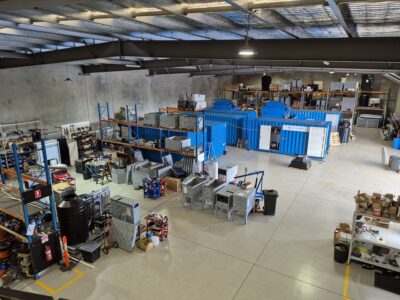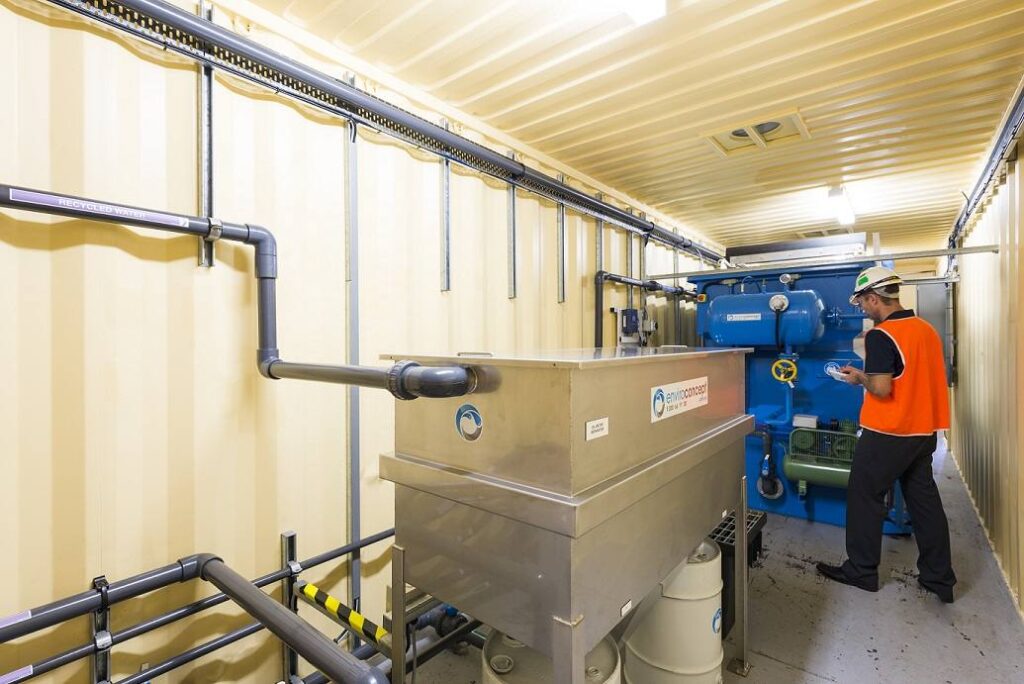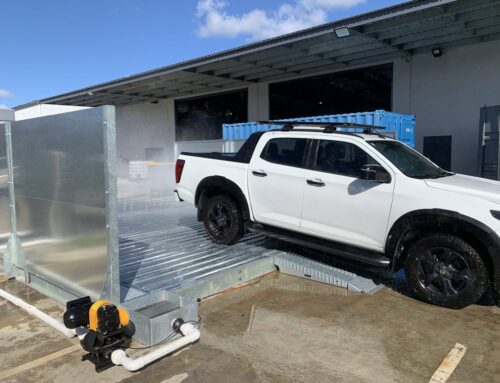Operating a wash bay doesn’t have to drain your resources. In fact, with the right systems, layout, and maintenance practices, you can boost efficiency, stay compliant, and extend equipment life—all without overspending.
Struggling with the case of inefficient wash systems causing downtime? You’re not alone. Many operations managers across every industry, from mining to transport and automotive are discovering just how much time and money they’re losing due to outdated or generic equipment. Fortunately, there’s a smarter way to run your wash bay. This guide breaks down the practical steps you can take to reduce costs while keeping everything clean, compliant, and operational.
Keep It Clean: Daily Wash Bay Cleaning Prevents Expensive Repairs
Small debris buildup today can mean major damage tomorrow. A simple 10-minute clean each day can prevent blocked drains, corroded pumps, and overloaded silt traps.
Why this matters:
- Equipment lasts 30% longer when bays are properly cleaned.
- Reduces the need for unscheduled downtime and emergency repairs.
- Maintains safe conditions for operators using high-pressure systems.
Ensure your wash bay floor is free of oils, sediment, and solids after each use, especially in high-volume heavy equipment and vehicle wash operations. Combine this with proper pre treatment like oil water separators or flush diversion systems to protect downstream systems.
Cut Cleaning Time with Daily, Weekly & Monthly Checklists
You don’t need more time—you just need better structure. A maintenance checklist can cut cleaning time by 40% while improving compliance.
Sample Checklist Breakdown:
Daily:
- Sweep and rinse the wash area
- Empty silt traps
- Inspect flush diversion system
Weekly:
- Check holding tanks for levels and sediment
- Inspect grates and flooring for wear
Monthly:
- Test oil separator function
- Review water discharge quality against local authority standards
This tiered approach lets your team stay proactive while preventing long-term issues.
Invest Once: Choose Durable Wash Bay Equipment That Lasts

Buying cheap usually means buying twice. For operations managers seeking to get long-term value, choosing durable, Australian-made, quality products pays off.
Consider systems with:
- Hot-dip galvanised frames (resist corrosion)
- Modular and portable design for easy upgrades
- Load capacities that exceed site demands
Did you know? Australian-made portable wash bay systems last up to 30% longer and come with better local support—avoiding long lead times from overseas suppliers.
Train Your Team to Fix Small Issues Before They Become Big Ones
Downtime often starts with overlooked maintenance. Train your team to spot and resolve small faults before they escalate.
Example skills to teach:
- How to reset the oil water separators
- How to flush debris from holding tanks
- How to spot early signs of pump failure
This empowers operators, reduces the need to contact external technicians, and improves safety across your site.
Spot Problems Early with Fast Weekly Inspections
You don’t need to be reactive. A 15-minute inspection once a week can prevent system failure.
What to check:
- Integrity of wash bay floor panels
- Seals around the flush diversion system
- Signs of wear in the drainage channel
Use a mobile inspection checklist and have your team log issues in real time for faster response.
Use Eco-Friendly Cleaning Products That Lower Costs
The right cleaning agents do more than just clean—they reduce environmental risk and operating costs.
Why go eco?
- Less corrosive to equipment = longer lifespan
- Reduces pollution risk (important for local residents and regulators)
- Often more concentrated = lower consumption over time
Choose solutions compatible with your water recycling systems and certified by your local authority to streamline compliance.
Lower Utility Bills with Energy-Efficient Wash Bay Equipment
If your wash system is 5+ years old, chances are you’re using more water and power in your wash bay system than necessary.
Upgrade with:
- Timed rinse systems
- High-efficiency pumps
- LED lighting
- Low-flow nozzles
Case Study: A transport depot in WA cut water use by 38% after installing a new water treatment system with energy-saving features.
Prevent Flooding & Downtime with Smart Water & Drainage Management
Flooded bays don’t just halt operations—they can breach environmental compliance.
What you need:
- Properly sized holding tanks
- Automated pump-out systems
- Redundant silt traps in high-debris zones
Designing wash bays for capacity and redundancy means fewer emergency callouts and smoother day-to-day running.
Design a Layout That Speeds Up Workflow and Cuts Delays
Your wash bay design impacts productivity more than you think.
Design for:
- Direct entry/exit paths for large vehicles
- Easy access to wash water or wastewater controls
- Separation of clean and dirty zones
- Inclusion of unroofed wash areas when practical (to lower build costs)
Did you know? Facilities with optimised layouts report 25% faster vehicle wash cycles, especially in busy car wash or fleet operations.
Choose Reliable Suppliers Who Keep Your Wash Bay Running
Frustrated with the case of suppliers who don’t understand your needs? You’re not alone. Selecting a partner who delivers custom solutions, local support, and quick turnarounds is key.
What to look for in a supplier:
- Australian manufacturing and engineering
- Proven success across a wide range of industries
- Capability to design, build, and install full systems
- After-sales support and service teams
With over 500 clients including BHP, Rio Tinto, and the Department of Agriculture, EnviroConcepts is trusted to deliver tailored, scalable, and compliant portable wash bays and water treatment systems that stand up to real-world use. Contact us today!
Your 3-Step Process to a Smoother Wash Bay
Step 1: Assess
After you contact us, we evaluate your existing setup, layout, and compliance gaps.
Step 2: Design
We create a custom wash bay design tailored to your site, workflow, specific case, and regulatory needs.
Step 3: Deliver
We supply and install quality products, including portable wash bay units, oil separators, and full water recycling systems—with full support Australia-wide.
Don’t Waste Water: The Case for Smarter Wastewater Recycling in Wash Bays

If you’re still discharging wastewater without recycling, you’re missing one of the easiest ways to cut costs and improve environmental compliance. A properly integrated water recycling system isn’t just an upgrade—it’s a must-have for any wash bay handling heavy industry or high-throughput operations.
Here’s why smarter wastewater recycling makes sense:
- Get long-term savings by reducing fresh water usage across all wash bays.
- Meet environmental regulations with systems designed to treat, recycle, and reuse wash water.
- Minimise wastewater disposal costs, especially in remote or sewer-restricted sites.
- Strengthen your sustainability case—important for tenders, contracts, and internal ESG goals.
- Stay operational during droughts or water restrictions with on-site recycling capacity.
Take the case of a mining service yard that upgraded its wash bays with a closed-loop water treatment system. Not only did they reduce total water use by 45%, but they also avoided costly environmental penalties during peak inspection season.
How to get started:
- Audit your current wash bay system to understand how much wastewater you’re generating.
- Get a tailored recycling solution based on your industry, site flow, equipment, and environmental requirements.
- Connect your water treatment system to existing infrastructure, ensuring seamless integration.
Whether you’re managing a single wash bay or multiple wash bays across a transport fleet, a quality wastewater recycling system pays for itself—fast. Plus, it’s a future-proof investment that helps you stay compliant, reduce your environmental footprint, and get the most out of your system every day.
Frequently Asked Questions
Q: Can I install a compliant wash bay without access to sewerage?
Yes, with holding tanks and appropriate pre treatment, discharge can be managed off-site.
Q: How long does it take to install a portable system?
Our portable wash bay systems can be installed in as little as 48 hours, subject to site prep.
Q: Are your portable wash bays compatible with AQIS requirements?
Yes, our portable wash bays are designed to meet or exceed AQIS and local authority discharge standards.
Q: How do I manage seasonal rainfall in unroofed bays?
We design unroofed wash setups with extra silt traps, weather-tolerant components, and smart drainage to handle heavy rainfall.
Save More by Thinking Smarter
Want custom wash solutions fast? Yes, it’s possible!
Running a compliant, efficient wash bay doesn’t require a massive budget—just smart design, durable components, and a team that’s empowered to maintain it. Whether you’re in the mining, transport, or automotive industry, EnviroConcepts can help you get the best heavy equipment or vehicle wash systems tailored to your operations.
Ready to cut costs, stay compliant, and boost productivity? Contact us for an online estimate or a call back—we’re here to help, Australia-wide.
Let your operations team benefit from proven systems that work. Bookmark this post, share it with your maintenance leads and explore our full range of water treatment systems, oil water separators, and portable wash bay solutions today.




